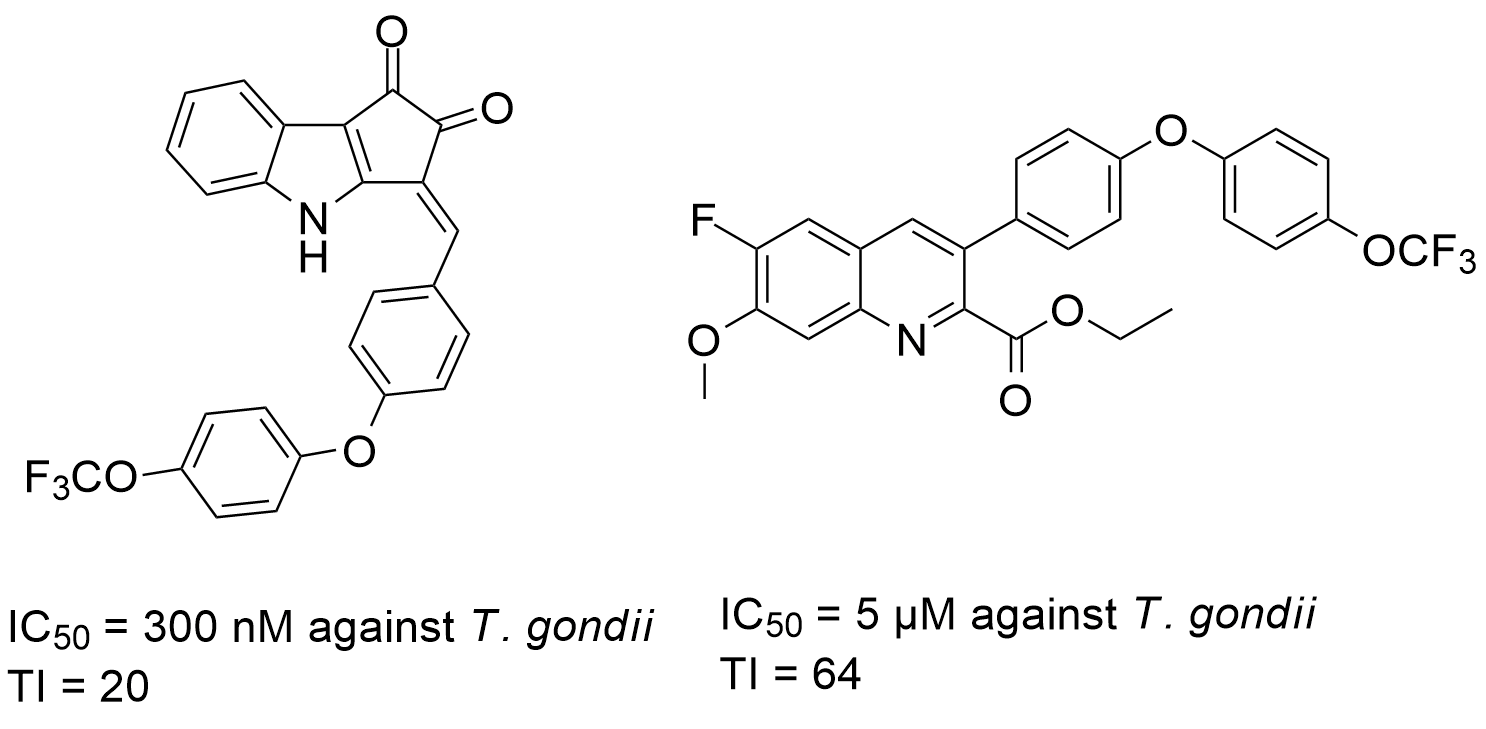Anti-parasitic Compounds
Parasitic infections are a major global health concern. As well, recent evidence suggests that latent parasitic infections may play an important etiological role in the development of certain mental illnesses. The rapid development of resistance to current treatments, as well as the lack of treatments for latent parasitic infections, necessitates the discovery of novel anti-parasitic drugs. We have discovered several classes of compounds that inhibit multiple stages of parasitic infection. Notably, the nostodione derivatives show sub-micromolar (300 nM) activity against active T. gondii infections and and also significantly reduce the invasion of parasites into the host cells. As well, we have explored a variety of arylquinoline derivatives that show very little toxicity towards host cells, but still effectively kill the parasites in low micromolar concentrations. |
 |
We are actively exploring new generations of anti-parasitic compounds that target multiple phases of the parasitic lifecycle, with several publications forthcoming. |
|
Relevant Articles Enol ethers as carbonyl surrogates in a modification of the Povarov synthesis of 3-aryl quinolines and their anti-Toxoplasma activity. C. E. Brown, J. McNulty, L. Jones-Brando, Org. Biomolec. Chem., 14, 5951-5955 (2016). Synthesis of the cyanobacterial metabolite nostodione A, structural studies and potent antiparasitic activity against Toxoplasma gondii. J. McNulty*, K. Keskar, H.A. Jenkins, N. H. Werstiuk, C. Bordon, R.Yolken, L. Jones-Brando.,Org. Biomolec. Chem., 13, 10015-10024 (2015). Total Synthesis of the Cyanobacterial Metabolite Nostodione A: Discovery of its Antiparasitic Activity Against Toxoplasma gondii. Synthesis and anti-toxoplasmosis activity of 4-arylquinoline-2-carboxylate derivatives. J. McNulty*, R. Vemula, C. Bordon, R. Yolken, L. Jones-Brando, Org. Biomolec. Chem., 12, 255-260 (2014). |
|